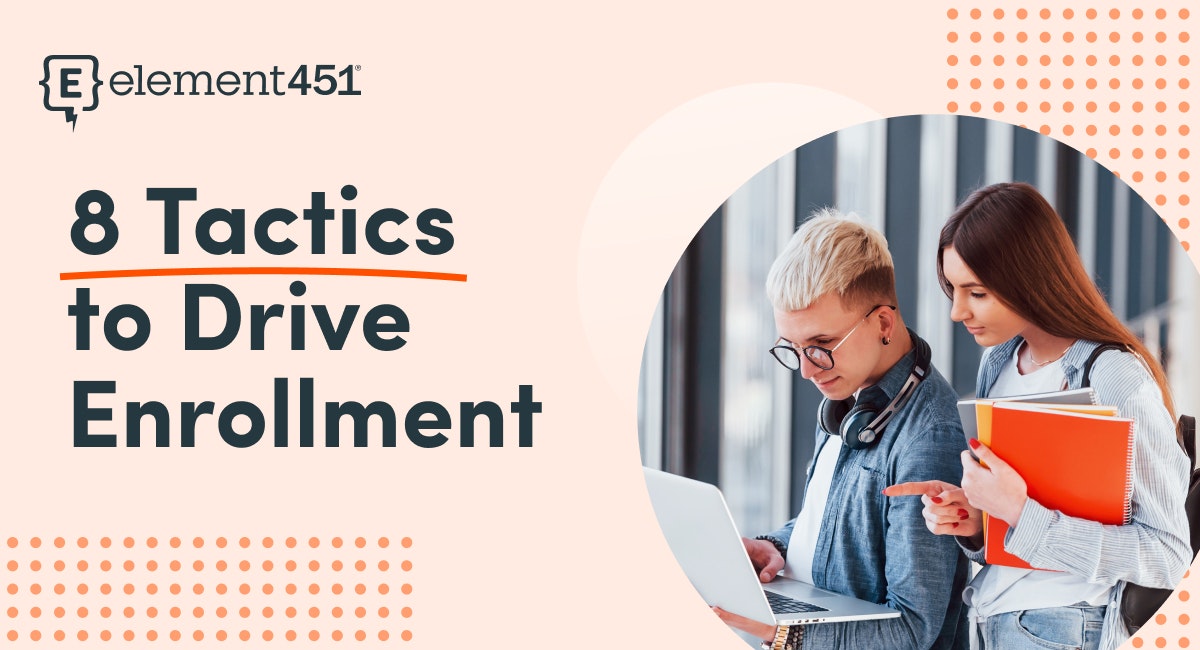Content Is Broken. We Need a New Way.
by Sirley Carballo · Updated Jan 12, 2023
Advertising used to be focused on casting a wide net, but the landscape today is very different. Diversity in offerings, shifting student preferences, and fragmented media means today’s game is about relevance, not potential reach. This shift requires a new mindset.
Vanity metrics and big numbers seduce us into thinking our marketing is going well. We see high open rates for an email and think this automatically means high engagement. But there’s a lot more we should be paying attention to. We must ask questions like these:
Who was part of the send for that email campaign? Are they likely to enroll? What did they do after they clicked? Are they engaging with your other digital marketing? In what ways? By digging deeper and focusing on relevancy, we can cultivate authentic engagement and increase conversions beyond what we currently see.
We presented at this year's AMA Innovation Showcase on ways to fix our broken content for today's digital age. Below is our summary of the biggest takeaways and a step-by-step process you can implement to transform your content.
Get the slides →
How to fix our broken content – segments vs. cohorts.
In order to ensure our content hits our targets with the right message at the right time and place, we can look to big agencies like our friends over at VaynerMedia, who utilize cohorts to categorize and connect personally with their audience.
By grouping our audience into smaller, more targeted cohorts with similar behaviors or preferences, we can easily provide relevant content that connects with every individual and nurtures true engagement.
Traditionally, institutions used segments to create distinctions among their prospects. Segments are:
- broad groups of people
- often mutually exclusive
- typically defined against one vector (demographic, psychographic, or behavior)
For example, one particular segment may be rising high school seniors and their parents.
The need for relevancy requires a new way. Shifting to using cohorts instead of segments brings specificity, uniqueness, and personalization into the mix. Cohorts are:
- nuanced and specific groups of people
- based on a range of inputs that are not mutually exclusive
- i.e., interests, needs, behaviors, preferences
An example of a cohort might be first-generation Latino students in California navigating the seas of the US higher education system for the first time.
Putting cohorts into practice.
Let’s take a look at how this plays out when put into practice.
Element451 partners with RIT Certified—part of the Rochester Institute of Technology that provides personalized upskilling to individual learners and entire organizations.
RIT Certified has created a step-by-step process that allows them to utilize cohorts and connect with individual prospects with hyper-personalized content that resonate with their needs, likes, goals, and behaviors.
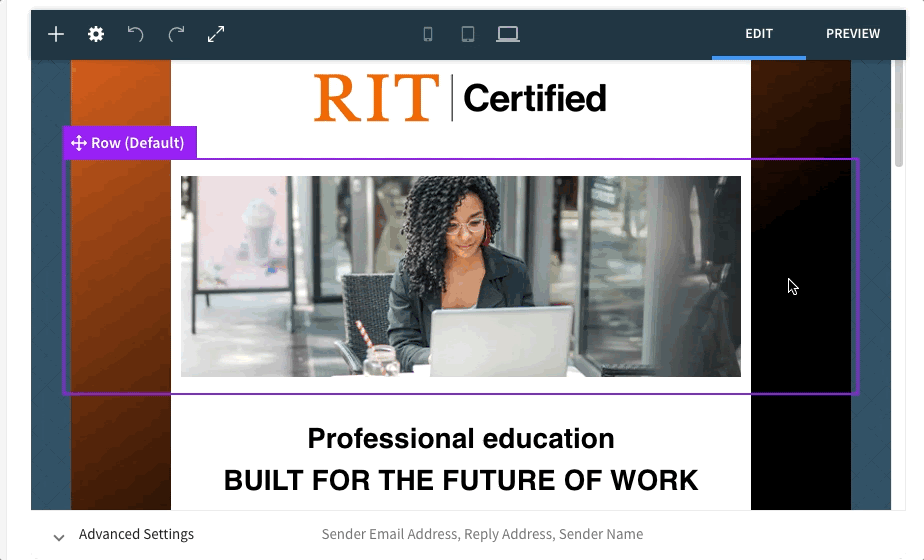
1. Define personas.
The first step is to define the personas or cohorts.
By creating audience types with this kind of detail, schools like RIT Certified are ensuring that staff has a more accurate picture of prospective students. When we know our audience, we can truly speak to them in a way that addresses their concerns and hopes.
2. Capture lead data with forms.
The next step is to begin capturing behavior from the top of the funnel. This is critical for personalization, which is an important outcome of the entire process. Remember, forms should be simple enough that students are completing them.
Forms are one way to capture the information you need. Live chat on your site is another way our schools are able to do this. Once we have essential information about our audience, there's no need to begin each interaction as if it's the first time. As the prospect gradually moves along their journey, you can get an even better sense of who they are as a unique learner.
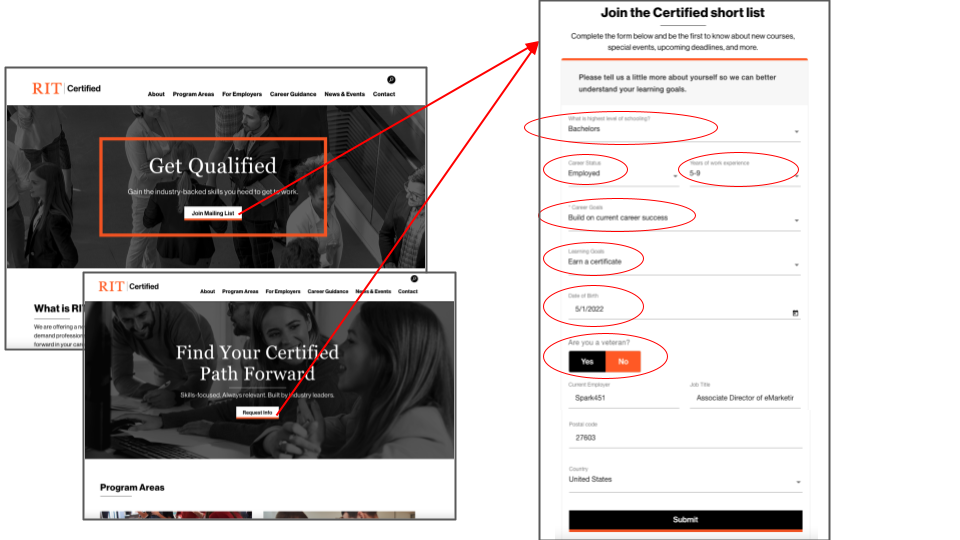
3. Create segments with persona criteria.
Next, you'll need to match what you're learning from the data you're collecting with whatever mechanism your CRM uses for creating groups of audiences.
In Element451, we call them segments. An example of the way this works is when someone fills out a form, the data they enter associates them with a pre-defined segment.
By utilizing this automated sorting function, you not only save time by eliminating the busy work of manually segmenting your audience, but you can instantly begin to target prospects. Immediacy matters in today's digital age, and the ability to quickly segment your cohorts is crucial.
4. Create labels for personas.
Once we gather the key information we need to build out our segments, we need to be able to identify our cohorts. In Element451, as people are entered into a persona segment, they also get a label attached to their record. You then have the ability to set up rules to assign persona labels.
Labels should help you define each group based on their individual qualities, but be simple and make sense at the first glance. For example, Veteran, Undecided Explorer, Professional Encore, Career Changer, or College Buypasser are all simple labels that say so much.
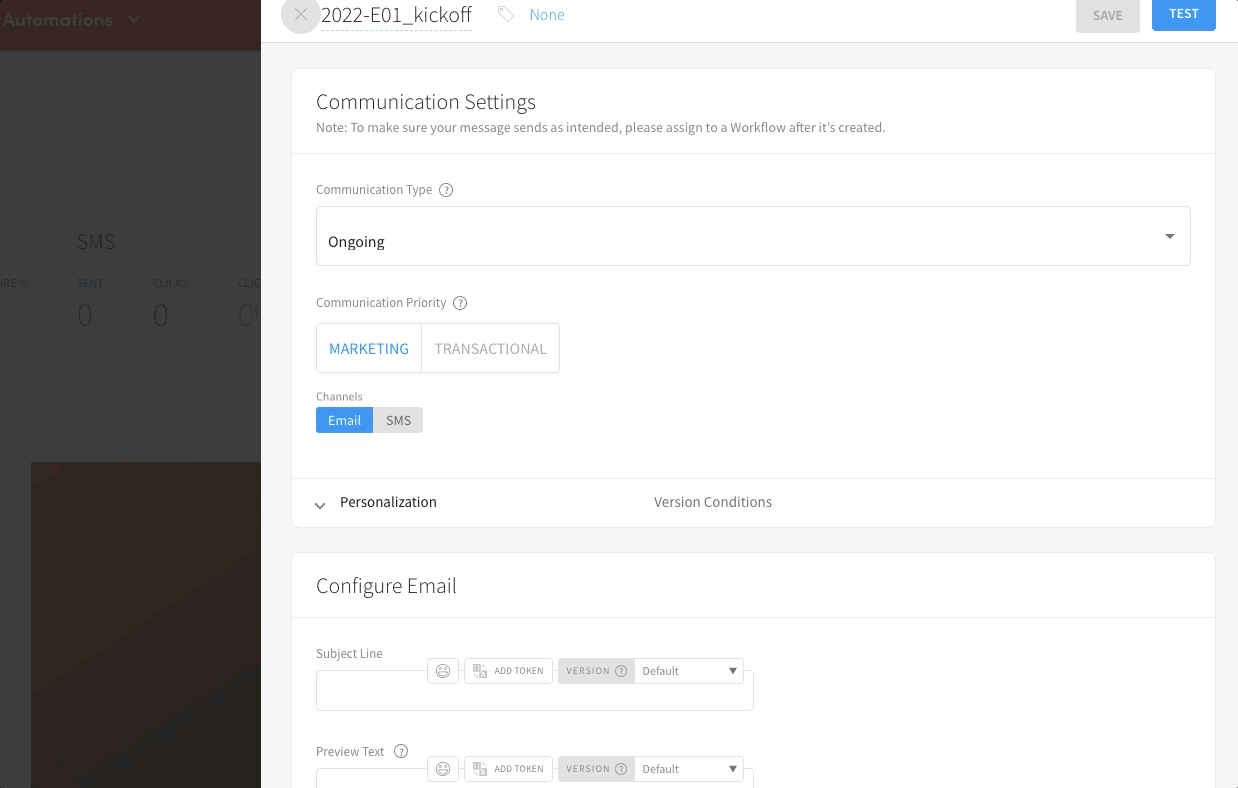
5. Create communications with dynamic content
Dynamic content is how content gets automatically personalized for each recipient.
It's easy and quick to customize the copy and even images down to the paragraph and sentence level based on what labels the person receiving the message is associated with.
We've all tried to personalize emails in the past. What we usually end up with is 25 practically identical emails, with little personalization beyond a name or intended major and a burnt-out writer or designer.
Dynamic content lets partners like RIT Certified create one base version with an unlimited number of personalized versions tailored to each student.

Get Your Demo of Element451
Students explore and pick where they’ll earn a degree in completely new ways and the old way of recruiting just won't cut it. Step into the new world of enrollment, powered by Element451. We've been waiting for you.
See It in Action
Let automation do the rest.
With the communications built out, it’s time to let automation do the rest.
Let's say a prospect comes into your site from a digital ad on social media and fills out a form. That activity immediately launches what we call a nurture stream. Then based on the student’s interaction with your emails, texts, and even web pages, you can trigger additional communications.
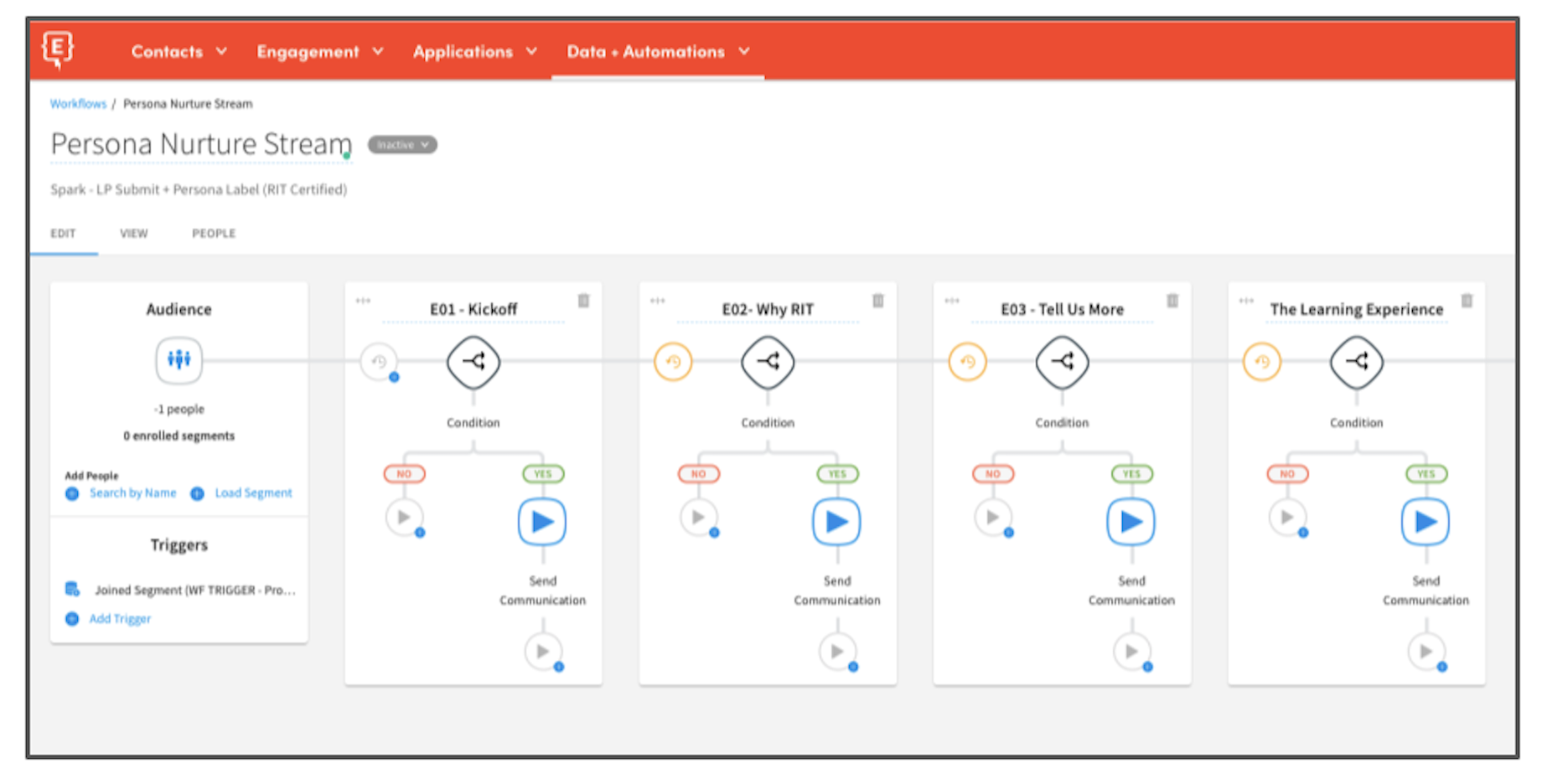
This is what they mean when they say right student, right message, right time.
Schools like RIT Certified have taken things even further by assigning their counselors tasks to follow up based on the student’s engagement with their content.
It's time for a new way.
Unlike the funnel process we’ve all come to know in our careers, the digital student journey is messy and nonlinear.
With the right CRM technology bridging your website and other systems, the digital marketing we experience from billion-dollar companies is possible for higher ed.
Book your Element451 demo today to learn how our student-centered platform can help you modernize your marketing strategies. We’ll recognize your unique goals and help you provide personalized experiences for all your students.

About Element451
Boost enrollment, improve engagement, and support students with an AI workforce built for higher ed. Element451 makes personalization scalable and success repeatable.
Categories
New Blog Posts

The Definitive Guide
AI in Higher Education
Bridge the gap between the latest tech advancements and your institution's success.
Useful Links
Related Articles

Talk With Us
Element451 is the only AI Workforce Platform for higher education. Our friendly experts are here to help you explore how Element451 can improve outcomes for your school.
Get a Demo





